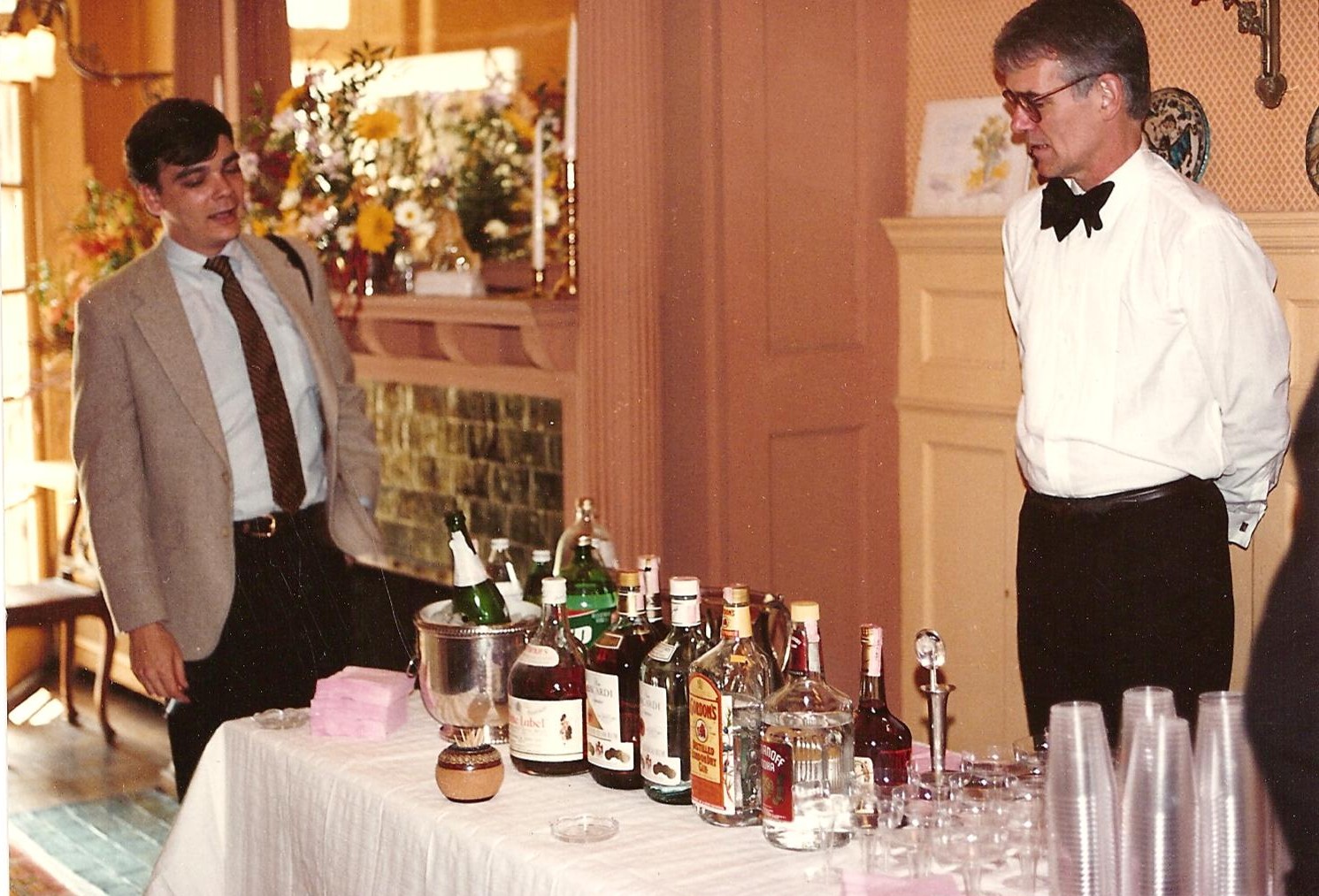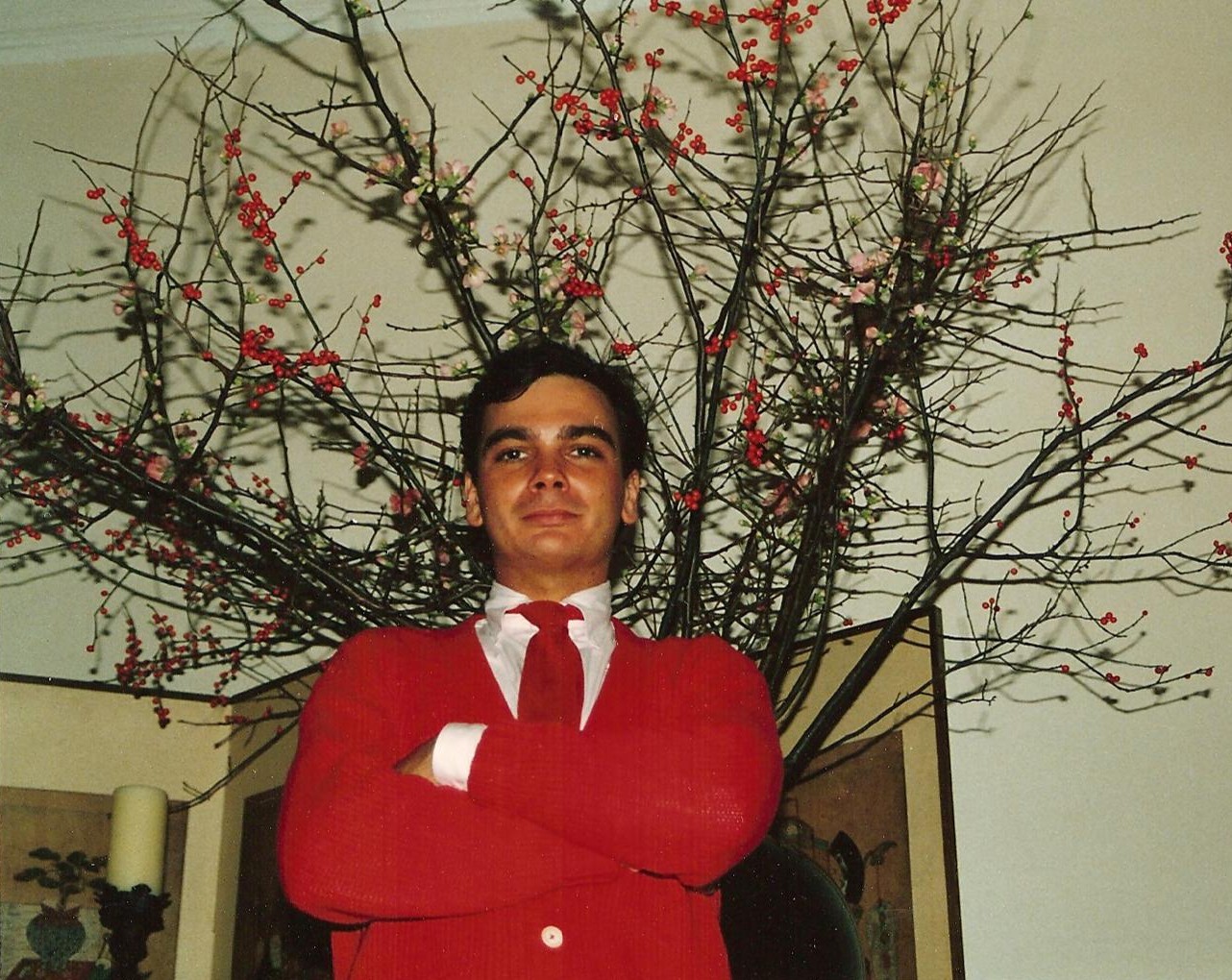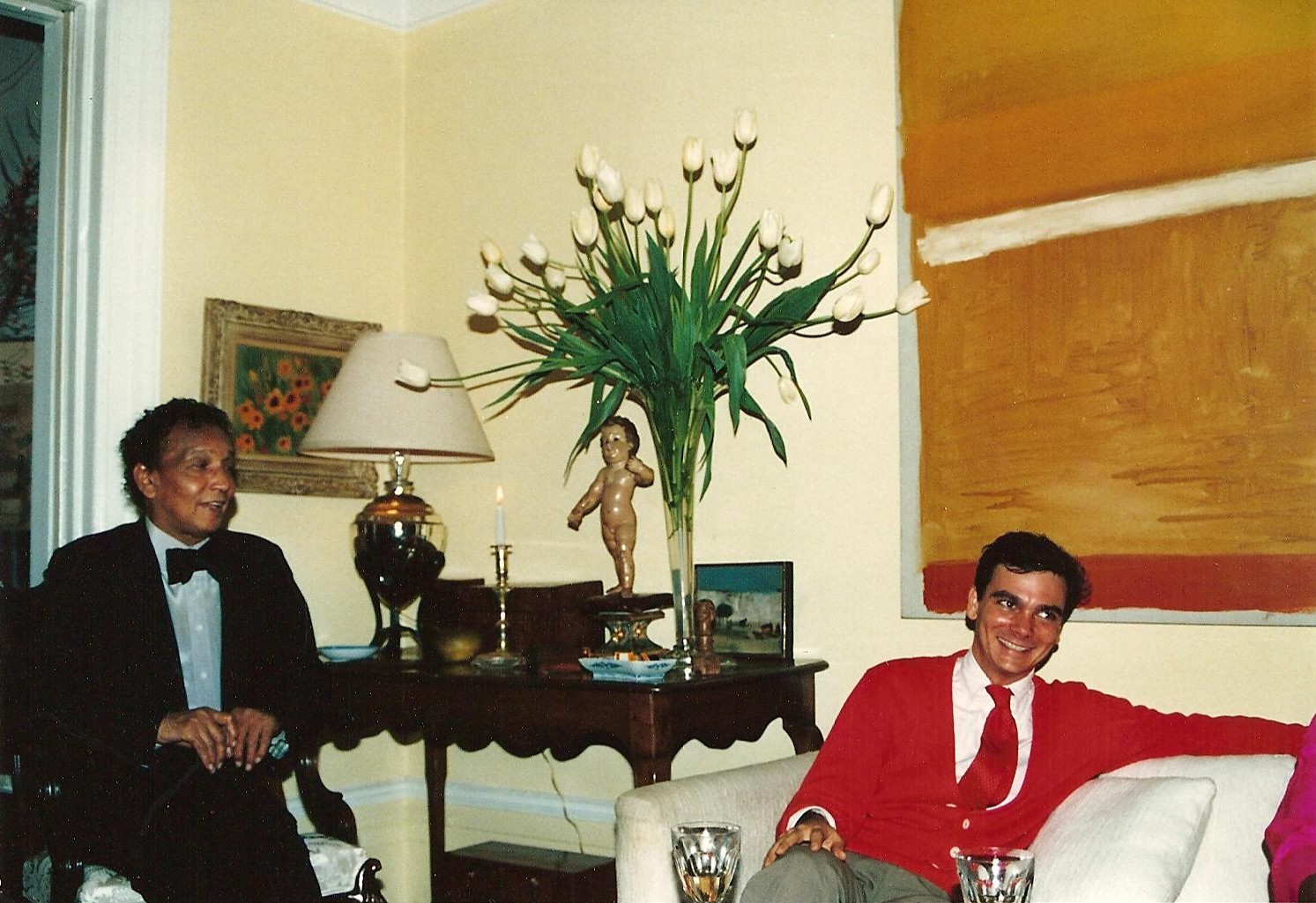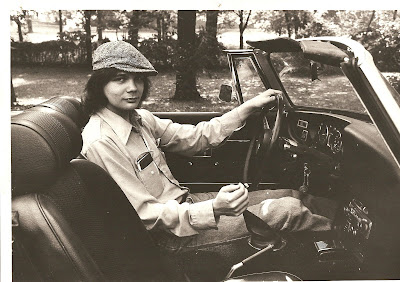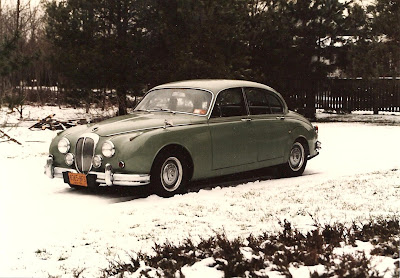I finally located a carton of old files of mine containing some interesting tidbits of personal history to blog on over here at my more "personal" expression, the context-creating
Steven_War_Ran--colloquially referred to by some in
my base as "his gay-shit blog," as distinct from my "paranoid-shit blog," the spaceless, and duly 9-11-focused:
StevenWarRan.

But tidbit doesn't begin to describe the fruits of Google research borne after I seeded a chance synchronicity, or as I prefer to call it,
a God-incidence, twenty-five years ago, when I tried to peddle an official portrait of Adolf Hitler at Sotheby's auction house in New York--a task at which I was not successful.
The back story of my attempt to
hondle an over-life-size (in real life Hitler was 5'8'', in the painting he is 6'2") oil-on-canvass, painted by the artist who Albert Speer in his 1970 book,
Inside the Third Reich, calls "Hitler's official painter,"
Heinrich Knirr, is my intent here, and not
der Fuhrer himself, a subject widely considered to be the most evil and destructive political manifestation of the 20th century, a verdict I'm content with, since George W. Bush's reign of terror can be neatly said to have only begun with the 21rst century, so in no way provides competition for the title.
Although, the historicity of propaganda is of some interest too. Absent any help from me, the picture resides today as the centerpiece of the
WWII Victory Museum, a contrived affair located just outside of Auburn, Indiana. Jeff Gubitz, executive director of the Fort Wayne Jewish Federation, in an explanation of the exhibit for museum visitors, says of its home at exit 126 of Interstate 69, “I think the importance of this particular exhibit is that it doesn’t honor or glorify Adolf Hitler," which, I should think under the circumstances, goes without saying.
Also in providing a context for the exhibition, Rabbi Jonathan Katz wrote, “This exhibit suggests the way art, just like humanity itself, can be corrupted in the service of wickedness....We often speak today of the power of the pen. But the power of the paintbrush and canvas can be equally, if not more, influential. An exhibit like this should prompt reflection on the use of mind control to achieve dastardly deeds. In an increasingly uncertain and vulnerable world it should make us that much more vigilant of those who would propagate odious falsehoods and exploit diabolically crafted images to infect and overthrow the foundations of civilized society,” which is my sentiment exactly. It is holocaust elucidaters, not the deniers, who should see the fruits of the present American administration most clearly.
The important work of researching and conserving the painting was done gratis by
Barry Bauman Conservation a Midwestern firm which in 2004, "left the private sector to establish America's first national conservation laboratory dedicated to offering complimentary conservation services to museums and non-profit organizations." In addition to the extensive
case study: "Portrait of Adolf Hitler" by Heinrich Knirr, which will tell you everything you want to know, Mr Bauman's web site lists three other case studies of laudable conservation services (amongst many others) he carried out on important paintings since 2004, at no charge to the not-for-profit institutions who hold them.

Mr. Bauman at work.
The museum, which had its grand opening in May of 2003, says, "According to the portrait’s donor, Jack Smith of Thomson, Ga., the portrait was liberated by one of the first American soldiers to enter Munich, Germany, in the spring of 1945. The soldier intercepted two Czechoslovakian men running down a street carrying a large object, which turned out to be the painting of Hitler."
It is at this point, I believe, that our stories intersect. My involvement stems from a chance acquaintanceship with an earlier owner of the painting, a man a generation or two older than myself, Jim Luce, an old friend of and frequent visitor to the household in which I lived. Jim may very well have been the Czechoslovakians' interceptor, or perhaps an officer just above them--that detail is lost from my memory. But I do recall, that in the time I knew him, in the early 1980's, Jim worked on a plantation in Georgia, which may, or may not, provide the linkage with Mr. Smith.
And I can state for the record, Jim was not an anti-Semite--he was a sadist. A collector of
Wilhelmina, to whom
Hitleriana was tangential. On the plantation, he worked in the tack room, polishing the stable gear, his fetish, which may indicate a grace-and-favor position offered in his dotage. As a young man, he had done the same while working in the Queen's stables at Buckingham. His was an old-school fetish, one in which the object was taken seriously for life. Since he had to work, he combined it with pleasure.
He was from the working class Wisconsin Luce's, like his brother Charles, chairman of Consolidated Edison from 1967 to 1982, not the ritzy New Jersey Luce's, like
Clare Booth, whose first husband was a Brokaw, who beat her, which provides some symmetry to the story at least, or her second husband, with whom she experimented with
LSD under the tutelage of
Gerald Heard...also a motif.
The stories which tickled me the most were from when Jim worked as the major-domo to "the last remaining Dodge in Grosse Point, Michigan." He told a story about how after she died he took a Renoir down off the wall but then thought better of it, thinking if he went after some of the good Japanese imari the daughter was less likely to notice the liberation. He was an influence on my career, I see now.
He was austere, and arch, and very, very wicked and I was glad I had made a good impression at our first brunch, when I served thin omelet's made of folded-over eggs without any filling inside. This pleased him immensely, as he referenced it for years afterward--perhaps I made up in style what was lacking in flavor, although I attributed the afternoon's success to the Bloody Mary's.
So having an important portrait of Hitler rolled up in one's closet (he said it sometimes fell out and hit him) certainly adds to one's overall effect. My brief foray across town to see what Sotheby's thought seemed innocuous at the time. I was aware the painting had no artistic merit, but its quality and historic importance were undeniable I felt, so I dismissed as odd what the auction house dismissed as controversial.

Since nothing succeeds like success, having a brother be the well-known chairman of Con-Edison was a component of his allure to me at that time as well, although after what I've learned recently researching Charles's career, I have to wonder who was the real sadist.
A lawyer by training, Charles Luce had had limited experience with utilities, according to Time magazine, writing in a 1977
Luce on Luce apologetics following a disastrous blackout--of not the drinking kind. He had been administrator of an Oregon power company in the 1960s and later "showed managerial talent as an Under Secretary of the Interior during the Johnson years"--the dead giveaway.
Speaking on the record for the company, but in actuality, I'd submit, more about himself, Luce said they provided "a tremendous catharsis for the pent-up tensions of the city. If we didn't have a Con Ed, we'd have to invent it." In other words, he was paid 200,000 of those delicious early-1970's dollars to be a whipping boy and a lightning rod. How else to explain his karma, which would have him quoted as saying only four days before the big event: "I can guarantee that the chances of a brownout or a blackout are less than they have been in the last 15 years, and that the chances are less here than in most other cities in the United States."
(A history project has conveniently organized bibliographies pertaining to the
Great Northeast blackout of 1965; and the far different
New York Blackout of 1977; as well as to the electric utility industry and the use of
electric power in general, and hypertext
links to web sites germane to the issue.)

The economic history of the utility makes absolutely no sense to me. Not surprising, given the company's
own history, which speaks offhandedly of Thomas Edison's apparent "liberal payments to New York's open-handed city government," beginning at its inauguration in 1880, saying succinctly that by the mid-20th century, there was a "growing perception among New Yorkers that Con Ed was an inefficient utility. The origins of this reputation seem to be split between the unavoidable difficulties of supplying power in so complex an environment as New York City and Con Ed's failure to meet that challenge."
When the company couldn't afford to finish operating plants it had begun construction on, Luce had the state buy and finish them, then bought the power back, but how the consumer benefited by this is unknown. What then is the definition of the "state" here, versus a "power company?" Can a power company raise a militia in return? With 25 percent of a Con-Ed bill representing taxes, what is "off-the-books" to hide inadequate fiscal health?
The company's history doesn't mince words: "Charles Luce's decision to sell off two of the company's plants in 1974 made possible a renaissance at Con Ed," but only for the real center of concern: the stock and bond holders. For the rate payers the dark ages continued.
"Luce took the unprecedented step of withholding dividends in the first quarter of 1974" causing the stock price to fall from $30 per share to $6, which would have been a good time for the state to buy out the utility and manage it for the public good. Because by 2001, the company could write, "As a result of our strong financial performance, we have been able to increase our dividend each year for more than a quarter century." "Strong financial performance" is code for "high rates," and lack of accountability.
"Between 1990 and 1993 the company laid off 3,000 workers, and by 2000 it had reduced its workforce by another 3,000." Since its business wasn't shrinking, doesn't this imply its prior workforce was inflated by 6000 workers?
It took the capital of Vanderbilt and Morgan to innovate and develop the electrical industry but that investment was paid off long ago. Even with politicians regulating the monopoly (that is, until they "de-regulated" it,) the seat of power always remained in the corporate board room and for 127 years, rich and poor New Yorkers alike have paid the highest electricity prices in the nation (with Long Island running a close second.)
But what should scare us the most is the lesson from the
Blackout of 1977. Within a few hours of going off grid, disadvantaged neighborhoods devolved into orgies of looting, while in Greenwich Village, the hooting of orgies--one big all-night block party--was heard.
The summer of "77
As
Nietzsche said of Hitler (in 1881), so shall be said of George Bush.
to be continued.......
Hitler Historical Museum
Kaiser Wilhelm
Hitler Paintings Auctioned in England
Hitler Historical Museum
CONJURING HITLER: How Britain and America Made the Third Reich by Guido Giacomo Preparata
www.baumanconservation.com
Buchenwald
Knirr Portraits of Hitler 1935, 1936, 1937
www.thirdreichruins.com/kunsthaus1.htm
http://www.artnet.com/Artists/LotDetailPage.aspx?lot_id=2D46D95946CC3DD4
www.thirdreich.ca/portraitsphotos.php
Academy of Fine Arts, Munich
ConEd

